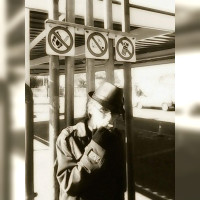Time travel is a staple of great fiction—when it’s done right. When it’s done wrong, you’re turning wormholes into plot holes instead. Here’s how to get a handle on the mechanics of time travel for fiction.
Doing Fictional Research
Start off by researching tales of fictional time travel and go through all the short stories, books, and movies you can get your hands on. Feel free to take your own notes on the story while you do this. If there’s a time paradox, ask yourself which—and why. Excellent examples from film are 12 Monkeys, The Butterfly Effect, Project Almanac and Back to the Future. (There are plenty more, including Hot Tub Time Machine.) Good books include The Time Traveller’s Wife, The Time Machine and 22/11/63.
Family Guy’s Back to the Multiverse does a good job at explaining what’s called the multiverse theory, where people aren’t just traveling through time, but skipping through alternate realities as they do so—here, the “rules” of the universe can be a little different, like the point where Family Guy’s Brian and Stewie find themselves going through a Disney-like alternate reality where there’s, well, a lot of singing.
Sounding “Sciency” the Right Way
We all remember the “flux capacitor” from Back to the Future. You’ll have to choose a method of time travel first. You can be creative: The most obvious solution is a time-machine—but remember to ask whether the time machine stays in one place (as in 22/11/63), travels with the time traveler (like Back to the Future or Family Guy) or is simply really weird—in Butterfly Effect, the protagonist has to be reading from his diary to jump in time.
Explaining Paradoxes
Paradoxes occur when things contradict each other; time travel paradoxes are plenty, and often part of the fun when writing it. Just don’t lose track. What counts in one chapter, has to count in another chapter—and if ripples can be felt throughout your storyline because of a character’s reckless time traveling, make sure these ripples in time continuously make sense.
The Grandfather Paradox is a popular example and one best illustrated by Back to the Future. If you go back in time to kill your grandfather, do you effectively kill your father—and thusly yourself? The Hitler Paradox is another example: If you go back in time to kill Hitler, then Hitler doesn’t exist—and you wouldn’t need to kill Hitler in the first place. That’s pretty damned trippy, don’t you think?
The Predestination Paradox is something I’d like to illustrate with a scene from The Matrix, where Neo meets the Oracle; she warns him to look out for the vase. When he asks ‘what vase?’, he knocks it over. This, simply, is when your past self is the very cause of needing to travel back in the first place. This creates an endless loop (hence this also being referred to as a closed causal loop) of travel.
The Bootstrap Paradox happens when something is sent back (often to the traveler themselves), negating the need for its creation in the first place. Astronomy Trek explains the Bootstrap Paradox in terms of George Lucas going back and giving himself the finished scripts. (Yes, we really had to think about that one, too.)
Taking Notes & Mapping Timelines
Obsessive note-taking is always advised for writing fiction, down to the last little plot detail. Outline beforehand, and have an outline of where your story is going to go. This is the secret to many great authors you’ve likely picked up this week, and there are very few authors who can just pull a plot twist out of nowhere.
When writing time travel, your outlines might have to become a little more focused on timelines and consequences. Create a mind map however you like, even if you have to clothespin some twine across your office and start hanging up notes.
Real Studies in Time Travel (and Real Life Oddities)
Don’t discount real science when writing science fiction. A recent computer simulation managed to come up with a possible solution to the grandfather paradox and even more recent studies have shown that, at least in terms of mathematical theory, time travel is entirely possible. In 2014, scientists studied the behavior of photons beamed through time.
Real-life oddities have also popped up from time to time: John Titor notably posted on internet forums in the early 2000s, claiming that he was a time traveler from the year 2036 who came with the purpose of warning mankind. In 2006, a man called Håkan Nordkvis claimed that he had found a worm-hole through to meet his 72-year old self under his sink—yes, that does remind us just a little of Being John Malkovich, but somehow still not as weird…





22/11/63 was so bad I could barely read it. I gave up on it. The book was written for a reason but it seems sure to me at least it wasn’t to investigate time-travel. Time-travel is a conceit, simple as that – an often dumb idea made somehow interesting whatever paradox it comes up against or overcomes or attempts to overcome.